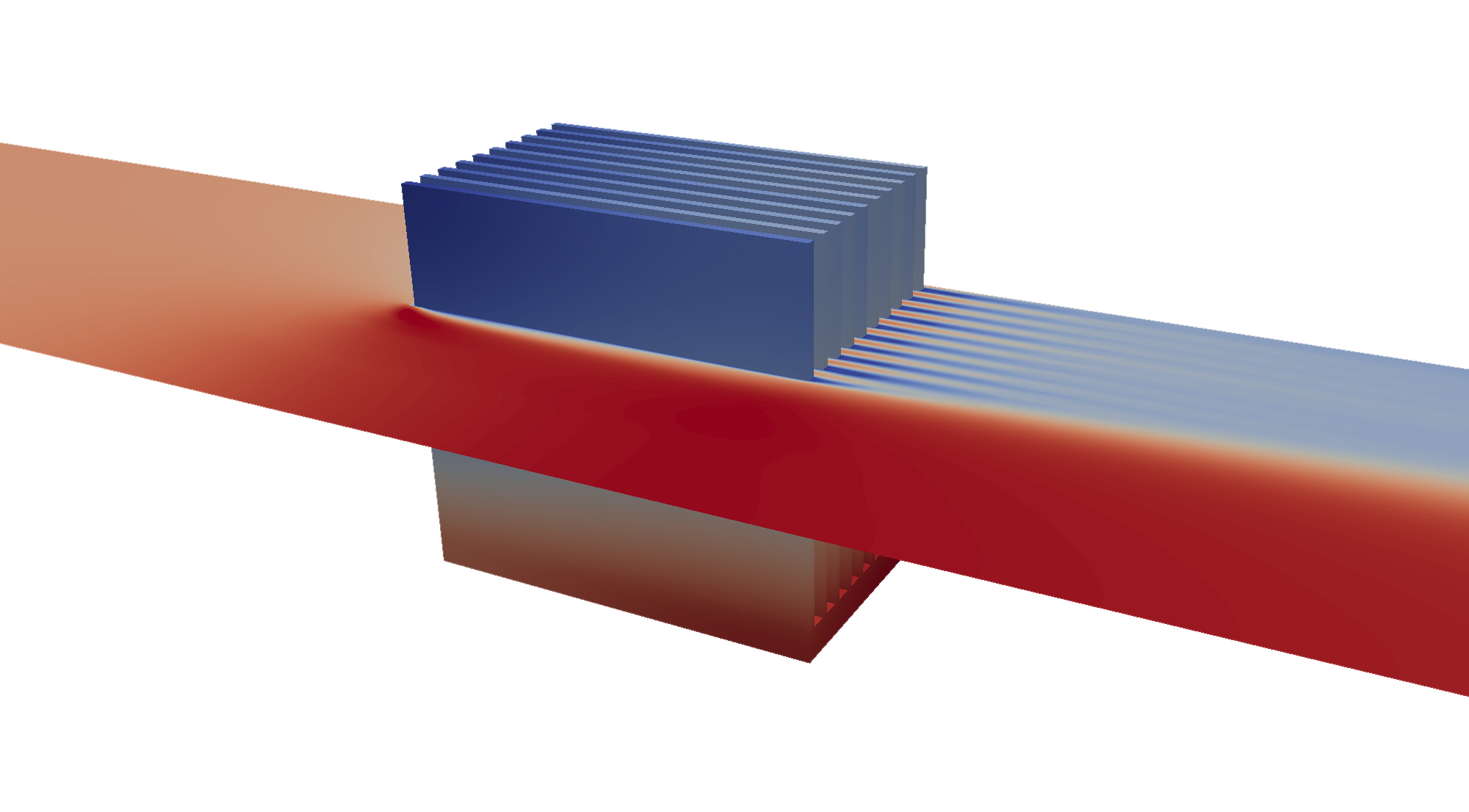During the operation of electronic components and computer processors, electrical resistance causes heat. Higher computational power increases the temperature. In the worst case, over-heated components malfunction or break. We improve heat-sink designs to provide sufficient cooling for industrial products.
Our Algorithms Outperform the Genetic Algorithms
Commercial plate-fin heat-sinks transfer heat from the source along multiple fins to the cooling air. The number of fins, their thickness, the height and the distance between them define the heat transfer and fluid dynamics during the cooling process. Our algorithms for the computation of best geometries are efficient and precise. In comparison to commonly used evolutionary algorithms, they outperform by a factor of ten.


